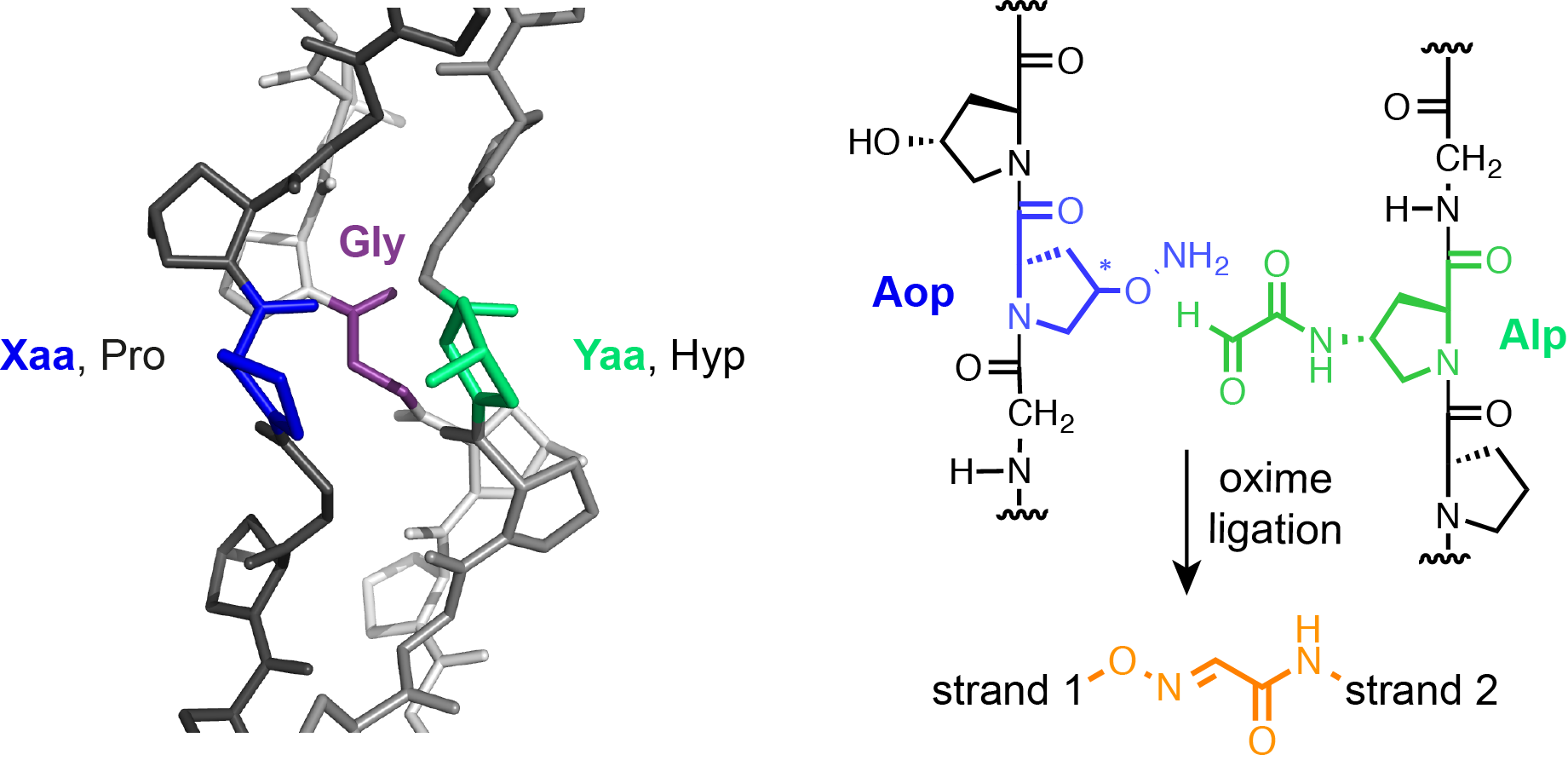Cross-Linked Collagen Triple Helices by Oxime Ligation
Collagen is the most abundant protein in mammals and the main component of their extracellular matrix.1,2 The chemical synthesis of collagen is attractive for medical and nanotechnological applications3 since it can provide access to structurally defined and functionalizable materials.4,5 However, the bottom-up design of materials mimicking the fibrous structures of natural collagen is hampered by the entropically unfavorable assembly of short single strands into triple helices.1,2 To lay the foundation for higher-ordered assemblies of collagen model peptides (CMPs), we covalently connected CMPs by oxime linkages between aminooxyproline (Aop)6 and 2‑oxoacetamidoproline (Alp) derivatives placed in neighboring strands. The cross‑linked strands folded into collagen triple helices with remarkably high thermal stabilities (Tm ~80°C). The design of the cross-links was guided by an analysis of the conformational properties of Aop, studies on the stability and functionalization of Aop-containing collagen triple helices, and molecular dynamics calculations. Our findings open new opportunities for the design of functional collagen-based materials forming by the sticky-ended assembly of structurally well-defined triple helices.

[1] M. D. Shoulders, R. T. Raines, Annu. Rev. Biochem. 2009, 78, 929.
[2] J. Bella, Biochem. J. 2016, 473, 1001.
[3] S. Chattopadhyay, R. T. Raines, Biopolymers 2014, 101, 821.
[4] B. Brodsky, G. Thiagarajan, B. Madhan, K. Kar, Biopolymers 2008, 89, 345.
[5] C. Siebler, R. S. Erdmann, H. Wennemers, Chimia 2013, 67, 891.
[6] F. Liu, A. G. Stephen, R. J. Fisher, T. R. Burke, Bioorg. Med. Chem. Lett 2008, 18, 1096.